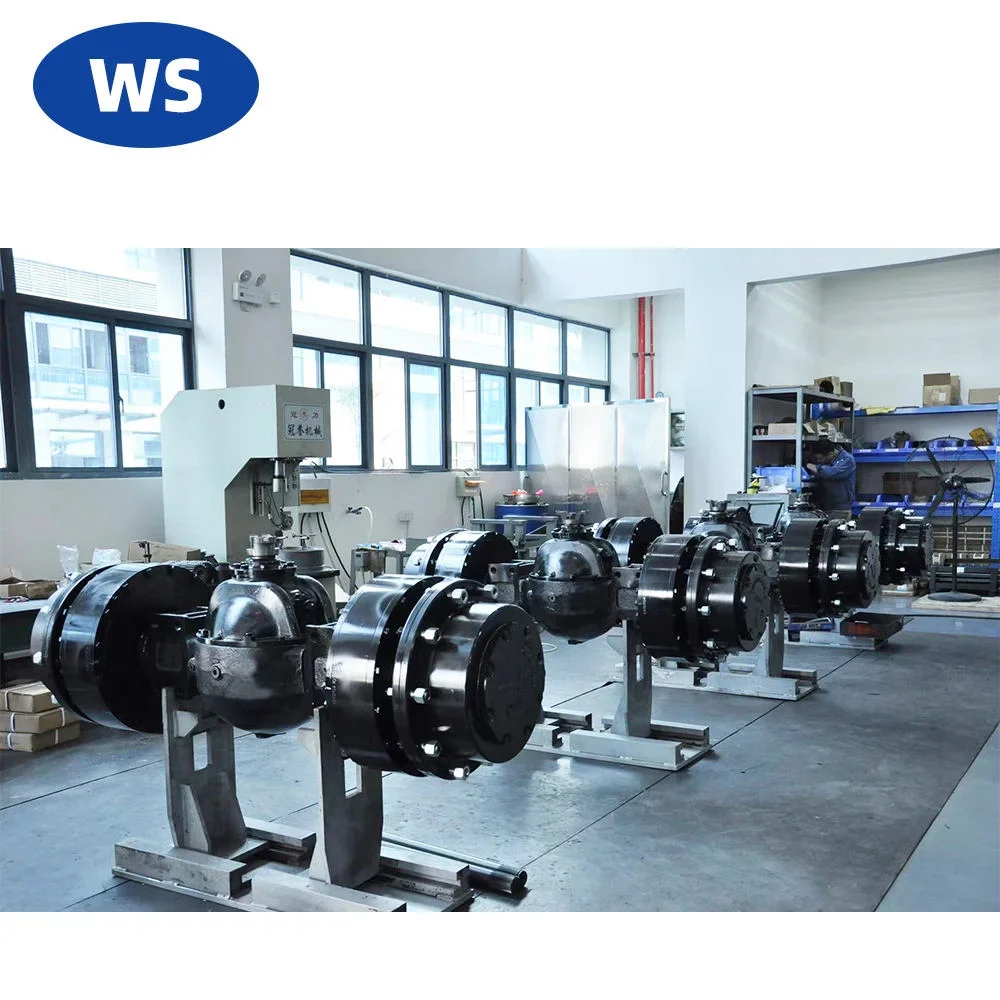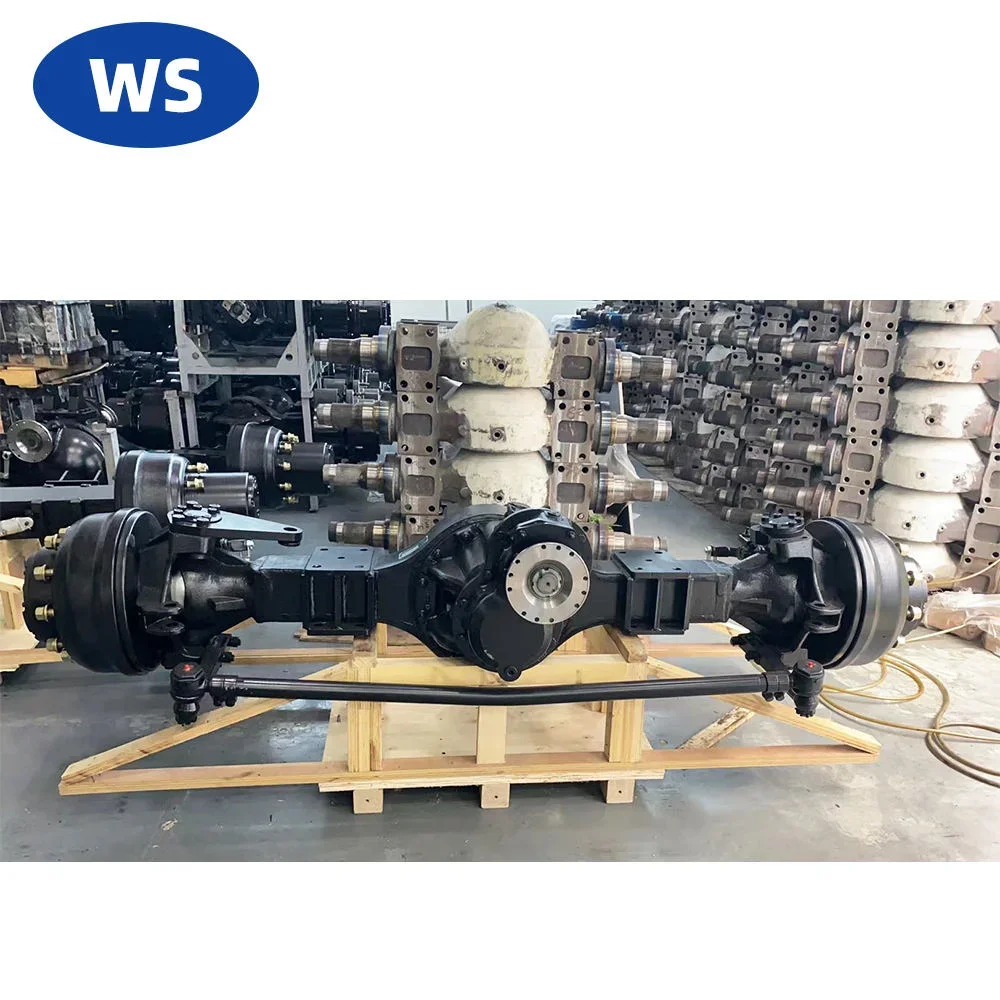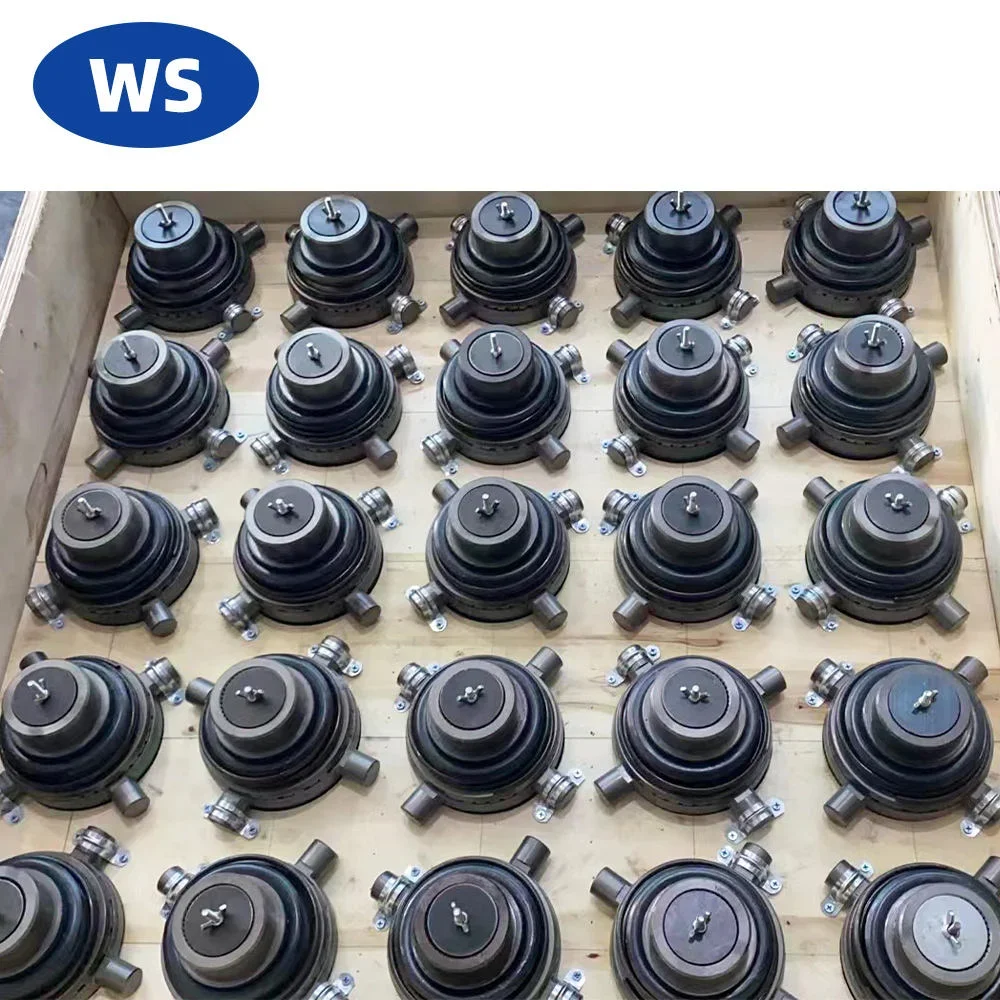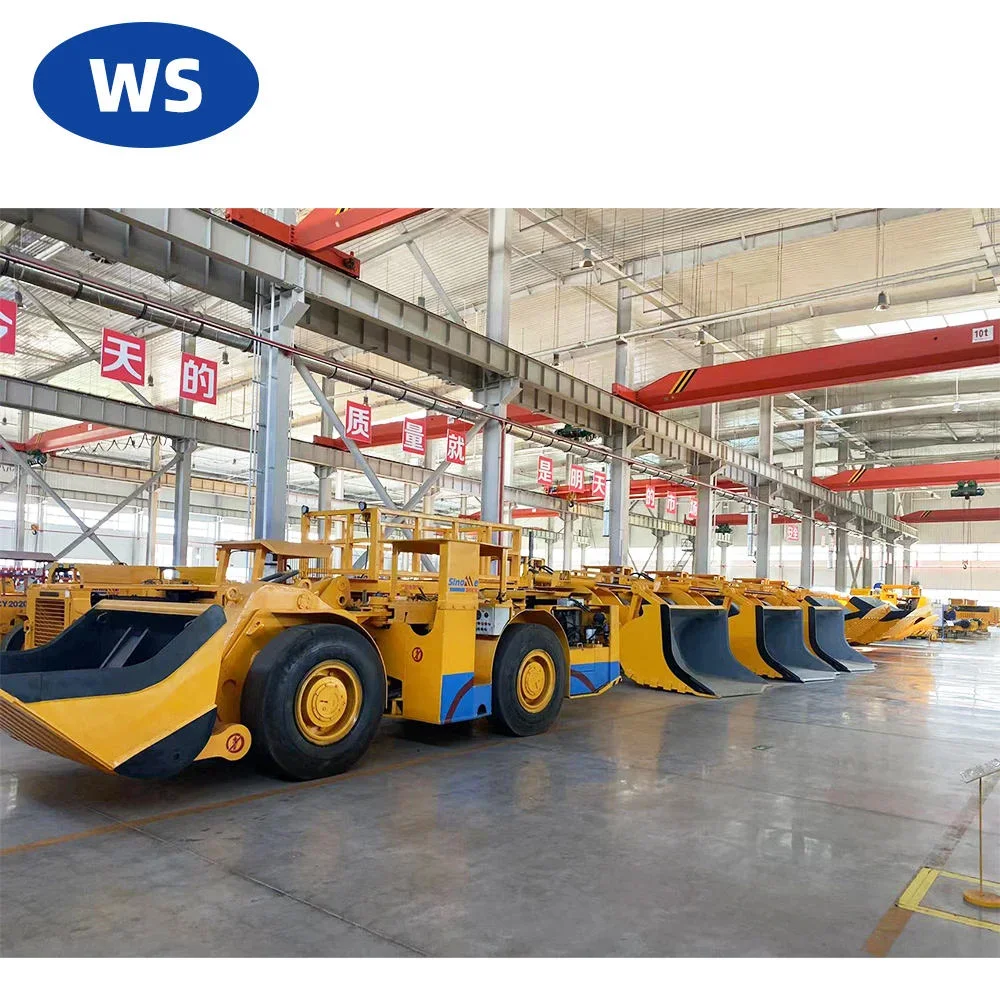Exploring the intricate world of vehicles unveils a crucial component: differentials and axles. These elements play a pivotal role in enabling smooth and efficient motion in various types of automobiles. Understanding the functions and significance of differentials and axles is essential for any automotive enthusiast or aspiring mechanic. From enhancing traction to facilitating cornering, these components are fundamental to a vehicle's performance and handling. Delving into the realm of differentials and axles provides insights into the mechanics behind how power is transmitted from the engine to the wheels, impacting overall driving dynamics.
Basics of Differentials and Axles
Role of Differentials
Differentials play a crucial role in distributing power from the engine to the two back axles, allowing them to rotate at different speeds. This function is essential for smooth turns and maneuverability on various terrains.
Significance of Axles
Axles serve as the central shafts that connect the drive wheels of a vehicle, transferring power from the differential to propel the vehicle forward. Without axles, the wheels would not be able to rotate and move the vehicle effectively.
Presence and Importance
Differentials and axles are ubiquitous in various wheeled machinery, including cars, trucks, and agricultural equipment. They are integral components that ensure efficient power distribution and enable vehicles to navigate corners smoothly.

Types of Differential Configurations
Epicyclic Differential
Epicyclic differentials utilize a system of gears to distribute torque. They consist of a set of planetary gears within a carrier connected to the drive shaft. This mechanism allows for torque division between the front and back axles, enabling each wheel to rotate at different speeds when necessary.
The epicyclic differential is highly efficient in distributing power evenly, especially in scenarios where one wheel encounters less traction than the other. By adjusting the speed of the planetary gears, this type of differential ensures that power is transmitted effectively to all wheels, enhancing vehicle stability and control.
Spur-Gear Differential
Spur-gear differentials, on the other hand, are based on a simple yet robust design. They employ a set of bevel gears that work together to allow the wheels to rotate at varying speeds while maintaining power distribution. This configuration is commonly found in rear-wheel-drive vehicles and some all-wheel-drive systems.
Spur-gear differentials have been historically used in various automotive applications due to their reliability and straightforward construction. Despite their simplicity, they are effective in transmitting power from the driveshaft to the wheels, ensuring smooth operation and optimal performance.
Historical Use and Current Functionalities
The spur-gear differential has been a staple in automotive engineering for decades. Initially developed for rear-wheel-drive vehicles, it has evolved to accommodate different drivetrain configurations. While traditional spur-gear differentials are still prevalent, modern advancements have led to more sophisticated versions with improved efficiency and performance.
In contrast, epicyclic differentials have gained popularity in all-wheel-drive and four-wheel-drive systems due to their superior torque management capabilities. These advanced differentials play a crucial role in optimizing traction control and enhancing overall driving experience in various road conditions.
How Differentials and Axles Work
Differential Mechanism
Automobile differentials use differential gears to allow the outer drive wheels to rotate at different speeds during turns. This mechanism enables smoother cornering by compensating for the varying distances traveled by each wheel.
The gear differential system within a vehicle's differential gear train ensures that power is distributed evenly between the two wheels. By doing so, it prevents slippage and enhances traction on challenging terrains.
Axle Functionality
Drive shafts connect the differential to the outer drive wheels, transmitting power from the engine through the transmission to the wheels. Axles play a crucial role in maintaining a consistent speed and direction of movement by transferring torque to the wheels efficiently.
Axles are essential components that support the weight of the vehicle and withstand the forces generated during acceleration, braking, and cornering. They ensure that power from the engine reaches the wheels effectively, contributing to the overall performance of the vehicle.
Integration of Differentials and Axles
The seamless integration of slip differentials, differential gears, and drive shafts with the axles is fundamental in facilitating smooth and controlled motion of a vehicle. During turns, the differential allows the outer wheel to rotate faster than the inner one, reducing tire wear and enhancing stability.

Differential Designs Explained
Drive Shaft and Wheels
Differentials play a crucial role in allowing wheels to rotate at varying speeds during turns. The drive shaft transmits power from the engine to the differential, which then distributes it to the wheels. This mechanism enables smooth turning without slippage or damage.
Variations in Designs
-
Open Differentials: Found in most vehicles, these allow wheels to rotate at different speeds.
-
Limited-Slip Differentials: Provide better traction by limiting speed variation between wheels.
-
Locking Differentials: Ideal for off-road vehicles, they lock both wheels together for maximum traction in challenging terrains.
Role in the Automotive Industry
Differentials are integral components in vehicles, ensuring smooth operation and control. They prevent wheel slippage, improve handling, and enhance overall performance. In heavy-duty machinery like trucks, differentials are vital for carrying heavy loads efficiently.
Applications in Other Machinery
Apart from vehicles, differentials find applications in various machinery like tractors, locomotives, and industrial equipment. They enable efficient power distribution and control, enhancing the functionality of these machines. For example, in tractors, differentials aid in navigating uneven terrain by allowing wheels to spin independently.
Operation in Vehicle Systems
Integration of Axles
Axles play a crucial role in power transmission within vehicle systems. They are responsible for transferring power from the engine to the wheels, enabling movement. By connecting the wheels on each side of the vehicle, axles ensure synchronized rotation, facilitating smooth and efficient operation. The integration of axles in traction systems is essential for the functionality of various vehicles, including cars, trucks, and trailers.
Importance of Differentials
Differentials are vital components in vehicles as they enable wheeled vehicles to make turns smoothly. By allowing the outer wheel to rotate faster than the inner wheel when cornering, differentials enhance maneuverability and stability. This mechanism prevents tire wear and strain on the drivetrain, ensuring optimal performance and longevity of the vehicle. Moreover, differentials distribute power evenly between wheels, improving traction on different surfaces.
Impact of Differential Designs
The design of differentials significantly influences vehicle performance and efficiency. Various types of differential designs, such as open differentials, limited-slip differentials, and locking differentials, cater to specific driving conditions and preferences. For instance, off-road vehicles benefit from locking differentials that provide equal torque to all wheels, enhancing traction in challenging terrains. On the other hand, limited-slip differentials offer improved handling on slippery roads by distributing power based on traction requirements.

Key Applications and Uses
Instruments
Differentials and axles serve as integral instruments in various industries, ensuring smooth operation and power distribution. In the automotive sector, they are crucial components that enable vehicles to navigate corners efficiently.
In agriculture, tractors rely on differentials and axles to transfer power from the engine to the wheels, facilitating movement across challenging terrains. Similarly, construction equipment such as bulldozers and excavators utilize these components to enhance maneuverability and traction.
Solutions
Different axle configurations offer versatile solutions for specific vehicle types and functions. For instance, solid axles are commonly found in heavy-duty trucks and off-road vehicles due to their robustness and ability to withstand heavy loads. On the other hand, independent suspension systems with CV joints are preferred in passenger cars for a smoother ride and improved handling.
Prime Mover
Differentials and axles play a critical role as the prime mover in transmitting power from the engine to the wheels. This mechanism allows vehicles to maintain stability, especially during turns, by enabling the outer wheel to rotate faster than the inner wheel.
Weight Distribution
The design of differentials and axles is optimized to ensure optimal weight distribution across all wheels of a vehicle. This balance enhances traction, prevents wheel slippage, and improves overall performance in diverse operating conditions.
Spur Design
The spur design of differentials and axles contributes to efficient power transmission by utilizing gear teeth that mesh together smoothly. This design minimizes friction and wear, enhancing the longevity and reliability of these components.
Maintenance and Troubleshooting
Essential Maintenance
Maintaining differentials and axles is crucial for their longevity. Regularly checking the gear oil levels and quality is essential. Replacing the gear oil according to the manufacturer's recommendations helps prevent excessive wear.
Inspecting the traction components such as tires, brakes, and suspension ensures optimal performance. Lubricating the moving parts of the differentials and axles prevents friction-related damage. Proper torque specifications should be followed when tightening bolts to avoid issues.
Troubleshooting Tips
When encountering issues with differentials and axles, it's important to diagnose them promptly. Unusual noises, such as whining or clunking, may indicate problems. Vibrations or shuddering while driving could point towards imbalanced tires or worn-out components.
Leaks around the differential housing signify potential seal failures. Addressing leaks promptly prevents further damage. If there are issues with the axle shafts, inspecting the universal joints for wear is necessary. Any signs of rust or damage should prompt replacement.
Importance of Regular Inspections
Regular inspections play a vital role in ensuring the proper functioning of differentials and axles. Inspecting the construction of these components helps identify any signs of wear or damage early on. Timely repairs can prevent costly breakdowns in the future.
By conducting routine maintenance tasks, such as checking fluid levels and inspecting for leaks, owners can prolong the lifespan of their vehicle's drivetrain components. Following the manufacturer's recommended maintenance schedule is key to avoiding unexpected issues on the road.
-
Consistent maintenance practices enhance the durability of differentials and axles.
-
Prompt troubleshooting can prevent minor issues from escalating into major problems.

Closing Thoughts
The intricate workings of differentials and axles play a crucial role in the functionality of various vehicles. Understanding the types, designs, and operations of these components is essential for both enthusiasts and professionals in the automotive industry. From basic functionalities to complex applications, the knowledge shared in this article sheds light on the importance of maintaining and troubleshooting differentials and axles for optimal performance.
For those looking to delve deeper into the world of automotive engineering or seeking to enhance their maintenance skills, exploring the nuances of differentials and axles can be a rewarding endeavor. By staying informed and proactive in upkeep practices, individuals can ensure the longevity and efficiency of their vehicles. Stay curious, stay informed, and continue to explore the fascinating realm of differentials and axles.
Understanding the Role of Differentials and Axles in Vehicle Performance


